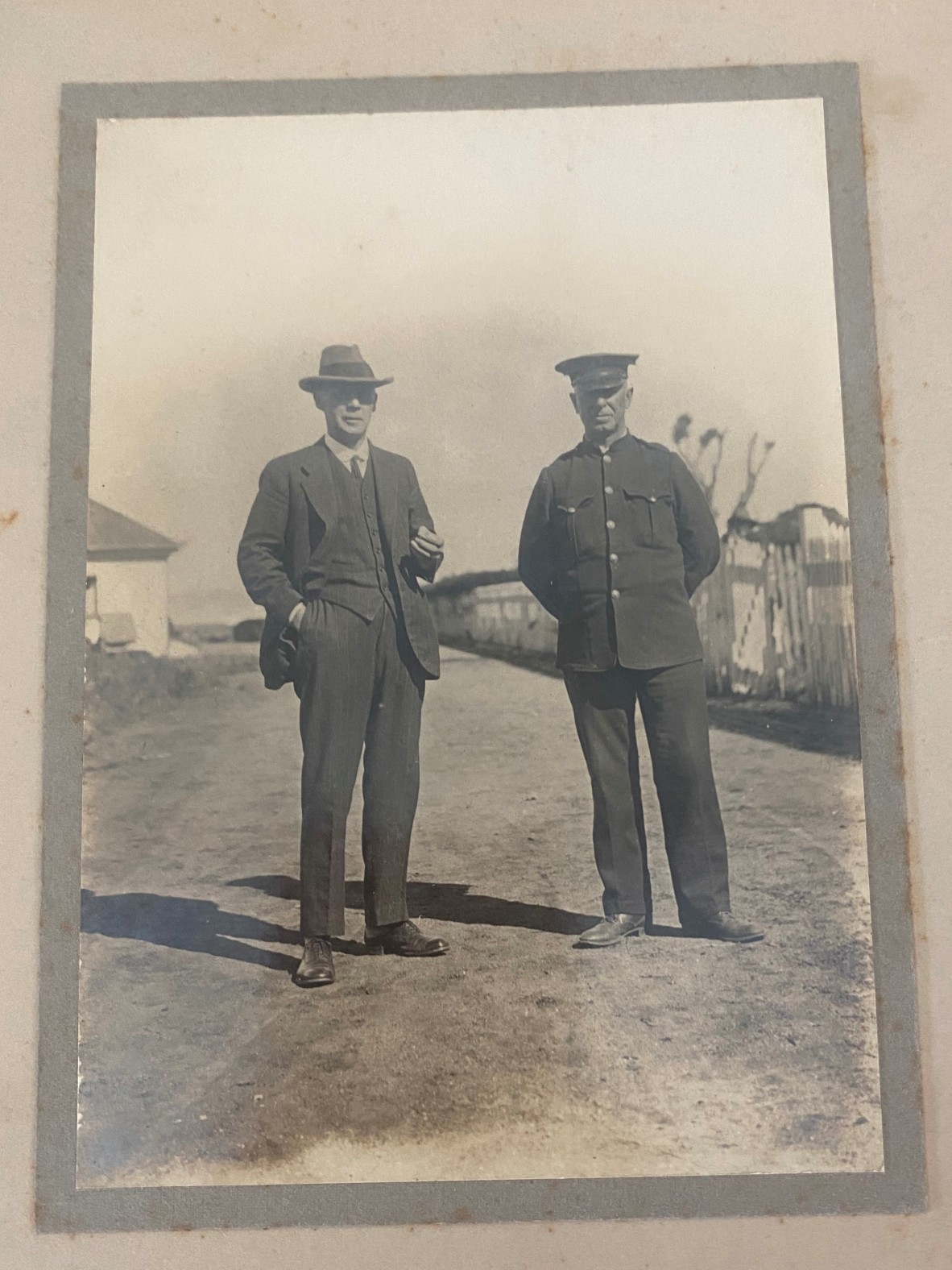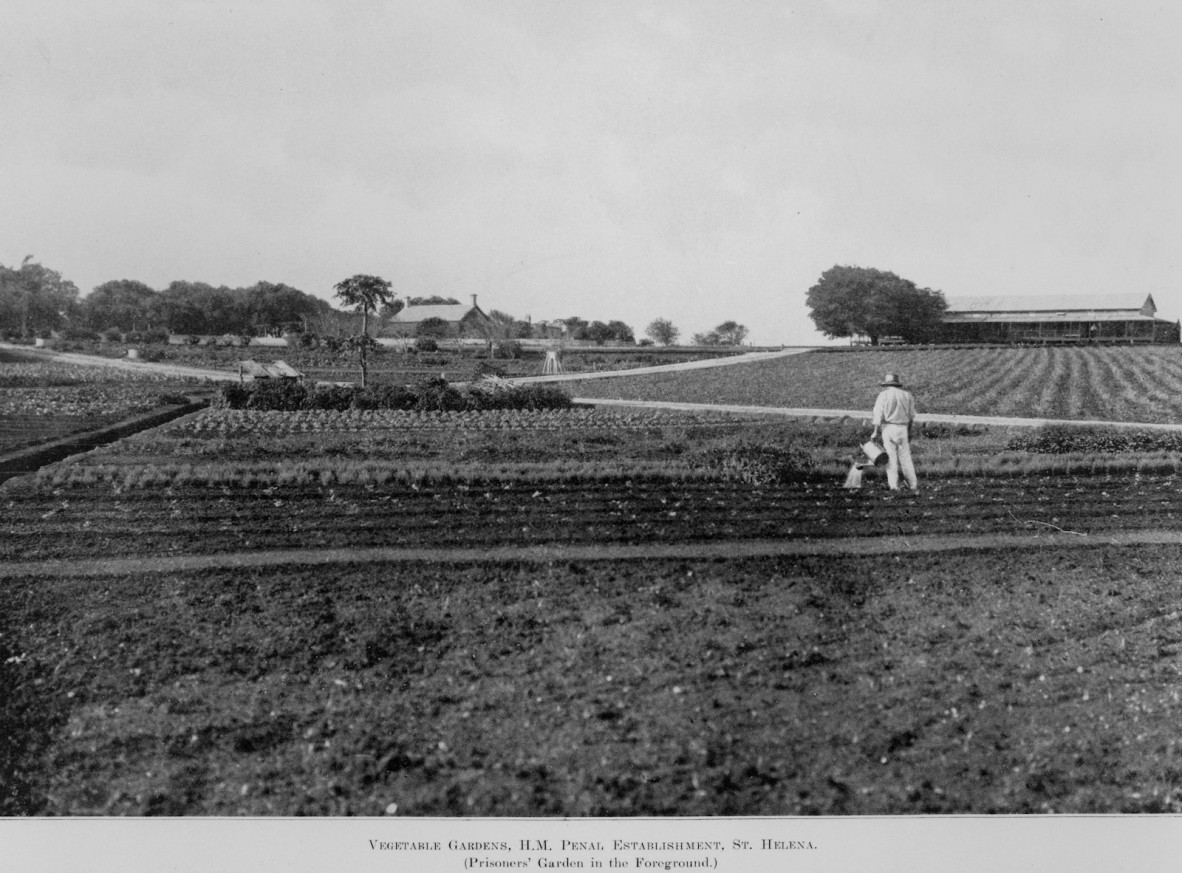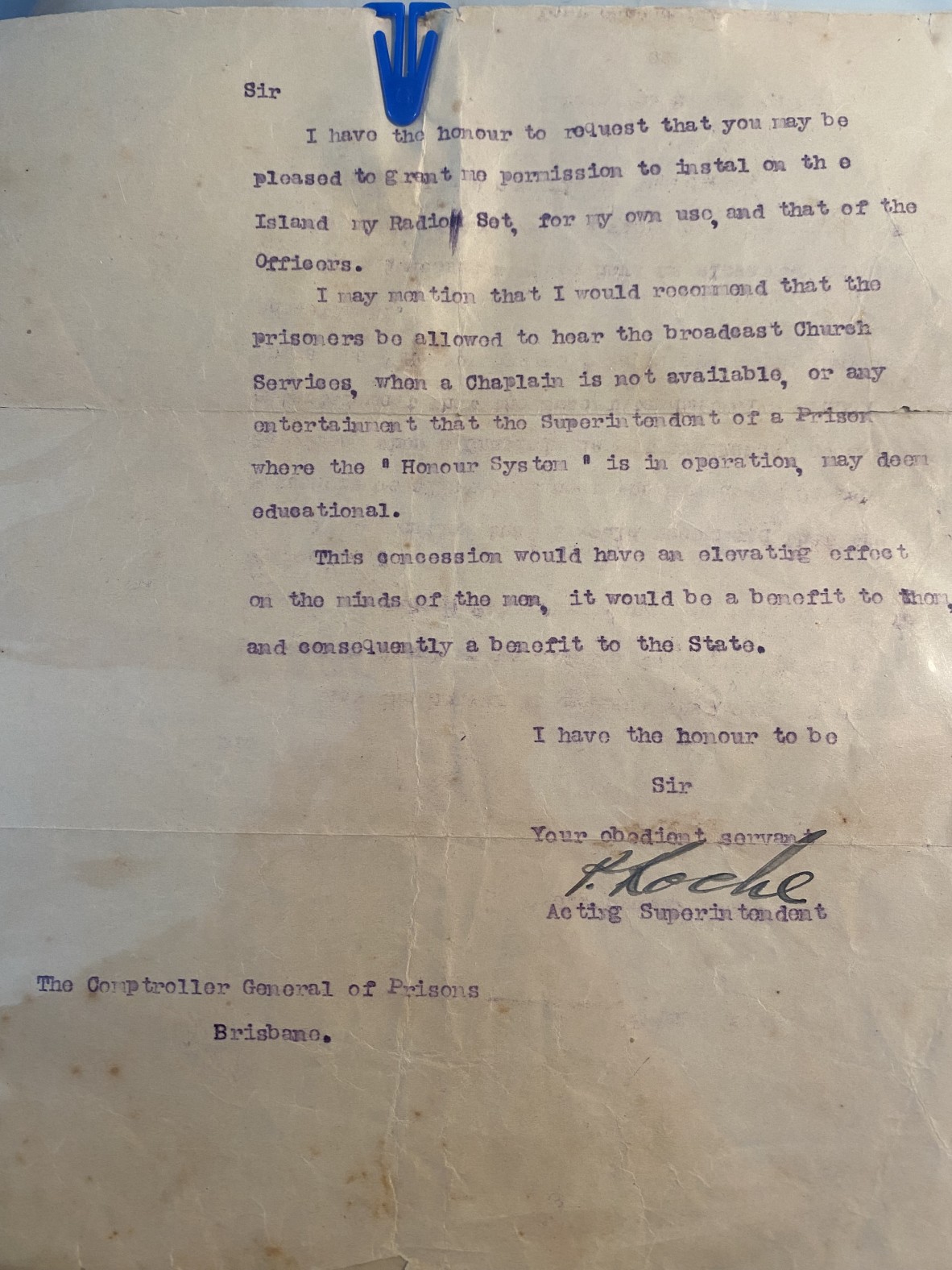Exploring therapeutic landscapes in Queensland histories: St Helena Prison farming
By Dr Mimi Tsai, 2022 John Oxley Library Fellow | 20 April 2023
This blog was written by 2022 John Oxley Library Fellow Dr. Mimi Tsai, as part of her fellowship project, Vernacular Landscapes and Queensland Memories: Exploring Queensland’s resilience through narratives of therapeutic environments.
This article acknowledges Quandamooka people as the First Nations owners of Noogoon (St Helena Island). Noogoon is part of Quandamooka Country. I pay respect to their Elders, lores, customs and creation spirits. My reinterpretation of this part of the history is entirely focused on the therapeutic landscapes.
Landscapes afford the power of healing. Throughout history, therapeutic places are associated with treatment or healing. “Therapeutic landscapes” is a concept that has increasingly attracted people’s attention in recent years. Health geographer Gesler first defined therapeutic landscapes as “landscapes associated with treatment or healing”. In a contemporary context, this refers to therapeutic hospital gardens and sensory places that afford restorative power and connection to nature. In ancient times, there were also various places that had the same functionalities such as the Roman Baths.
Therapeutic places could also refer to places that afford therapeutic or healing elements during difficult times. Reflecting on the history of Queensland, there were several difficult places that provided healing powers to its users. St. Helena Island is located 7km north-east of Manly and 21 km east of Brisbane. Prior to its prison history, St. Helena was first recorded in a coastal exploration by British navigator and cartographer Matthew Flinders in July 1799. In his note, he described:
“This island was two or three miles in circumference. The central part was higher than the skorts, and was covered with a coating of fine vegetable mould, of a reddish colour……The trees upon it, upon which was the new pine, were large and luxuriant…….”
St. Helena Prison Farm, 1931, John Oxley Library, State Library of Queensland.
In the original text, it continues with a description of the St. Helena Establishment:
“The name “St. Helen'' was originally given by the Officer in Charge of the Braneh Penal Settlement at Dunwich. A troublesome black-fellow, whom it is said the whites called “Napoleon '' was exiled on the island, which was afterwards called St. Helena”.

Plan of the Island of St Helena, 1869. Report from the Select Committee on the Penal Establishment at St. Helena, together with the Proceedings of the Committee and Minutes of evidence. Arthur Hunter Palmer, Brisbane, 1869. John Oxley Library, State Library of Queensland.
St. Helena was set up as a Quarantine Station in February 1866. During this period of time, as a result of overcrowding issues in prison space in Brisbane, every morning, 30 prisoners were taken to the island and confined in the cells in the Halk called “Proserpine '' and brought back at night. Gradually, a local-up was built in 1867 and eventually on the 20th of May, 1867, the very first prisoners were confined on St. Helena island and this place was firstly established with the object of sending all long-sentence men from the Brisbane Gaol.
St Helena Island prison operated during 1867-1932. In 1921, His Majesty’s St Helena Penal Establishment was officially reclassified as a Prison Farm.
In 1929, it was reported that with 380 men confined there and the most prevalent offences were larceny (162 men), fraud (67 men), and burglary and housebreaking (25 men).
From 1926-1931, Patrick Roche was the acting Superintendent who was one of the pioneers trialling the so-called “honour system” at the prison. Differentiated from a cold cell of prison experience, the honour system offers prisoners different types of living experience while they serve their terms in St Helena Island. They would learn the skills in the workshops, dairy and farm.

Photos of Patrick Roche and Dr. E. Dods 1926. 29427, Patrick Roche St Helena Prison Papers, Photographs and Realia, John Oxley Library, State Library of Queensland.

Vegetable gardens H.M. Penal Establishment St. Helena (Prisoners garden in foreground), 1911. John Oxley Library, State Library of Queensland. Neg 67113.

Ayrshire dairy herd and milking shed on St Helena Island, 1910. John Oxley Library, State Library of Queensland. Neg 67091.
Prisoners would have opportunities to work in the farmyards to assist in planting, seeding, and harvesting. The fruits and vegetables cultivated, grown and harvested by the prisoners became dinner in St. Helena Establishment.
In 1927, acting superintendent Patric Roche wrote a letter to the Comptroller General of Prison from Brisbane. In the mail, he requested to have a radio set installed for his personal use, as well as for the officers who also worked in the St Helena Establishment. In the same request, he was asking for approval to also benefit the prisoners.
“... the prisoners be allowed to hear the broadcast church services, when a chaplain is not available, or any entertainment that the superintendent of a Prison where the “Honour System” is in operation, may deem educational.” He continues to write “This concession would have an elevating effect on the minds of the men, it would be a benefit to them and consequently a benefit to the state.”

Letter from acting superintendent Patrick Roche to Comptroller General of Prisons, Brisbane requesting a radio for the St Helena Establishment, 1927. 29427 Patrick Roche St Helena Prison Papers, Photographs and Realia, John Oxley Library, State Library of Queensland.
If there is a way to re-visualise St Helena Island during the Honour System, the prisoners’ experience working in the farmyard provided connections to outdoors and nature. With Superintendent Patrick Roche’s special request, there were also soundscapes that provided sensory auditory experiences that may have holistically contributed hugely to the prisoner’s health and wellbeing. Archival materials from the John Oxley Library’s collections support this supposition.

An illuminated address (in which Roche's name is incorrectly spelt Roach) which was presented to Roche from the prisoners of St Helena as tokens of their esteem. 29427 Patrick Roche St Helena Prison Papers, Photographs and Realia, John Oxley Library, State Library of Queensland.

Wooden plaque with text “To Mr. Roche A Token of esteem from St Helena Honour Club 1930. 29427 Patrick Roche St Helena Prison Papers, Photographs and Realia, John Oxley Library, State Library of Queensland.
Below are letters that were sent to acting superintendent Patrick Roche to express the gratitude for the honour system and the time they served as St Helena Island Prison Farm

Letters that sent to acting superintendent Patrick Roche by prisoners to express the gratitude for the honour system and the time they served as St Helena Island Prison Farm, August 1927. 29427 Patrick Roche St Helena Prison Papers, Photographs and Realia, John Oxley Library, State Library of Queensland.

Letters that sent to acting superintendent Patrick Roche by prisoners to express the gratitude for the honour system and the time they served as St Helena Island Prison Farm, October 1930. 29427 Patrick Roche St Helena Prison Papers, Photographs and Realia, John Oxley Library, State Library of Queensland.

Letters that sent to acting superintendent Patrick Roche by prisoners to express the gratitude for the honour system and the time they served as St Helena Island Prison Farm, August 1930. 29427 Patrick Roche St Helena Prison Papers, Photographs and Realia, John Oxley Library, State Library of Queensland.

Letters that sent to acting superintendent Patrick Roche by prisoners to express the gratitude for the honour system and the time they served as St Helena Island Prison Farm, February 1928. 29427 Patrick Roche St Helena Prison Papers, Photographs and Realia, John Oxley Library, State Library of Queensland.
Dr Mimi Tsai
Collections
- 29427 Patrick Roche St Helena Prison Papers, Photographs and Realia, John Oxley Library, State Library of Queensland.
- Other collections about St Helena Island
Other blogs by Mimi Tsai
- Garden stories in a time of pandemic digital storytelling pilot workshops
- Exploring therapeutic landscapes in Queensland histories: World War Two
- Garden stories in a time of pandemic: workshop outcomes
- Drive in Theatres in Queensland
- Unearthing a Green Tradition in Queensland Schools: Arbor Day and school garden history
Other blogs about St Helena Island
Comments
Your email address will not be published.
We welcome relevant, respectful comments.